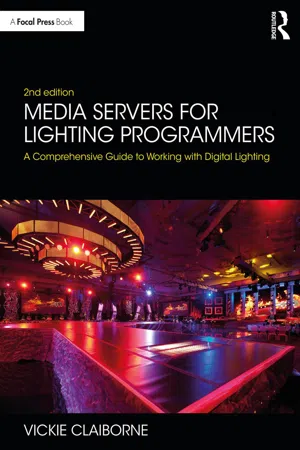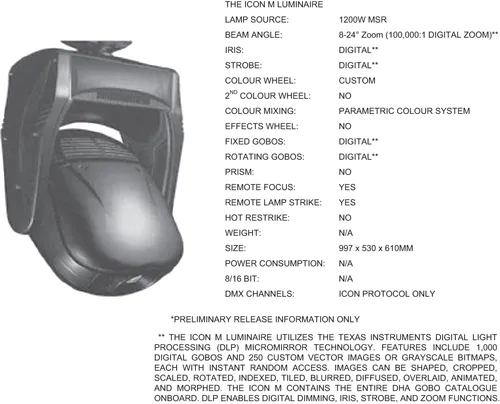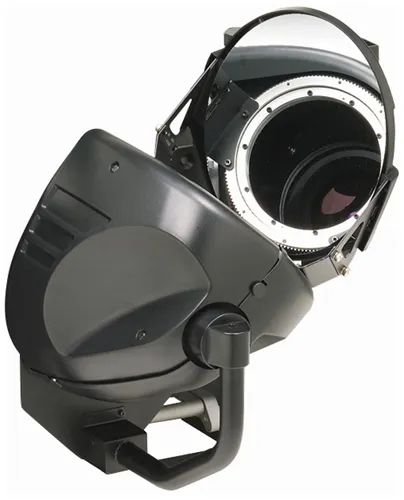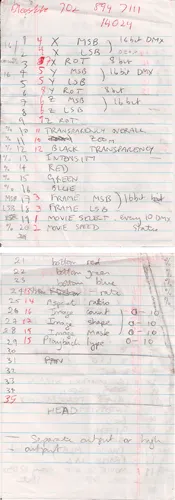
Media Servers for Lighting Programmers
A Comprehensive Guide to Working with Digital Lighting
- 228 pages
- English
- ePUB (mobile friendly)
- Available on iOS & Android
Media Servers for Lighting Programmers
A Comprehensive Guide to Working with Digital Lighting
About this book
Media Servers for Lighting Programmers, Second Edition, is the reference guide for lighting programmers working with media servers – the digital media devices used to control and manipulate video, audio, lighting, and projection content that have become the industry standard for live events, broadcast, and theatre performances.
This book contains all the information you need to begin working with these devices, with topics ranging from common video terminology and equipment to the workflows for setup, patching, programming, and operating a media server from a lighting console via DMX. It also features a brief history of where this unique market originated from and offers a look at the current trends in media server technology and the growing digital media industry. This second edition also includes more information on alternative methods of programming and operating a server beyond using DMX, along with new information on projection mapping workflows, content creation software, and media management techniques.
Media Servers for Lighting Programmers, Second Edition, is a valuable resource for the lighting programmer working in live entertainment venues.
The book includes access to additional online support material and links to industry sites and articles.
Frequently asked questions
- Essential is ideal for learners and professionals who enjoy exploring a wide range of subjects. Access the Essential Library with 800,000+ trusted titles and best-sellers across business, personal growth, and the humanities. Includes unlimited reading time and Standard Read Aloud voice.
- Complete: Perfect for advanced learners and researchers needing full, unrestricted access. Unlock 1.4M+ books across hundreds of subjects, including academic and specialized titles. The Complete Plan also includes advanced features like Premium Read Aloud and Research Assistant.
Please note we cannot support devices running on iOS 13 and Android 7 or earlier. Learn more about using the app.
Information
CHAPTER 1
How Did We Get Here?

Icon M spec sheet.

Catalyst Orbital Head.

Early Catalyst notes.
CHAPTER 2
Why Do LDs Want to Control Video?
Pros
- The lighting designer oversees the whole picture. What this means is that the LD can create more cohesive visual looks that combine lighting and video, and the execution of the cues will be tighter as well
- Fewer hands in the mix. If the LD is calling the shots on how a video is played, there are fewer opportunities for missed cues or wrong videos at the wrong time.
- Simplification of control. Most media servers today can handle video camera inputs, switching, and audio output, for example. And if less video gear is needed during the show, fewer operators will be needed as well.
- Video clips can be manipulated in real-time. This is a VERY important concept. Why? Because a pre-rendered video clip is what it is. When a video engineer plays it back using a standard video mixer, the video clip will playback exactly as it was rendered. Not so with a media server. The pre-rendered video clip is merely a suggestion of the final composited image because the workflow allows for real-time manipulation of video clips while being controlled from the lighting console. This means a virtually endless number of visual creations are possible because a piece of content can be affected via visual effects, color effects, size effects, and so on, available both in the media server and in the lighting console.

FOH lighting and video control.
Now for the Cons
- The limitations of the technology. Video equipment is highly specialized and therefore has been optimized to handle all of the tasks of video playback. Media servers and lighting consoles are digital solutions to video playback and can be somewhat limited in certain areas such as previewing a piece of video content in “Blind” before it is sent live to the stage. Therefore, it is best to know the limitations so there are no surprises at the show site.
- Less time for a complete design of both elements. If an LD’s time is split between lighting and video for a performer like a big pop star, for instance, then he/she will likely not have much quality time to completely develop the cues for both.
- The workload for a single programmer to manage two time-consuming elements can be overwhelming. If one programmer is programming both lighting and video, then both may not be as thoroughly programmed and tight as they would be if the jobs were divided between two people. And most programmers agree, it is best to separate video programming from lighting programming and use different programmers and consoles for each.
CHAPTER 3
The Evolving Role of the Lighting Programmer

Programming with grandMA2.
The Responsibilities of the Media Server Programmer
Table of contents
- Cover
- Half-Title
- Title
- Copyright
- Contents
- Introduction
- A Bit about Me
- Chapter 1 How Did We Get Here?: A Brief Look at the Beginnings of Digital Lighting
- Chapter 2 Why Do LDs Want to Control Video?
- Chapter 3 The Evolving Role of the Lighting Programmer
- Chapter 4 Getting Familiar with Hardware
- Chapter 5 What Does That Piece of Video Gear Do?
- Chapter 6 Programming a Media Server via DMX
- Chapter 7 It’s All about the Content
- Chapter 8 Optimizing Content Playback via DMX
- Chapter 9 Video Content Playback Issues
- Chapter 10 Video Copyright Laws
- Chapter 11 Preparing for a Show
- Chapter 12 Media Server Networks
- Chapter 13 Live Video Input and Video over Ethernet
- Chapter 14 Configuring Content to Outputs
- Chapter 15 Using Content Templates
- Chapter 16 Synchronizing Frames
- Chapter 17 Three-Dimensional (3D) Objects
- Chapter 18 Video Mapping Workflows
- Chapter 19 Pixel Mapping
- Chapter 20 Using Audio with Media Servers
- Chapter 21 Control Methods for Triggering Videos
- Chapter 22 The Evolution of Media Control
- Chapter 23 Visualizing Your Media
- Chapter 24 Projection Image Edge Blending
- Chapter 25 LED Display Devices
- Conclusion: Embracing New Technology
- Appendix A: Prepping for a Show
- Appendix B: The Boneyard
- Appendix C: Glossary
- Appendix D: Digital Lighting Resources
- Bibliography
- Index